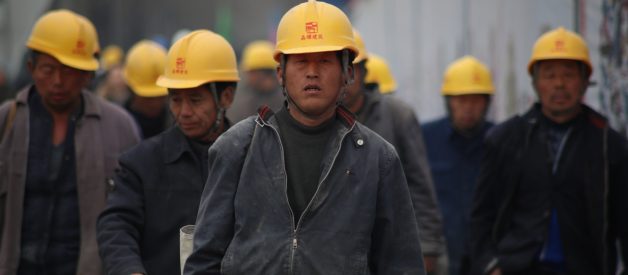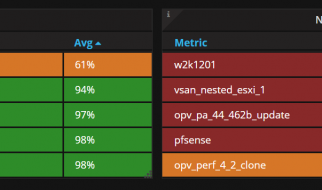
?The Goal? demonstrates the efficacy of the Socratic way of approaching and solving a problem. It showcases a deductive process, which can be applied to identify the ?systemic? problem behind an observed cause/causes. In the book, Dr. Goldratt challenges the common business practices and the conventional thinking process. He also clears the confusion around performance measurement, plant operational efficiency, the goal of a company, and productivity.
Before moving forward, I would like to introduce you to the main characters in the book
Alex Rogo ? Plant Manager of ?UNICO?
Jonah ? Alex?s teacher and physicist
Bill Peach ? UniCo?s vice president (Alex?s Boss)
Julie ? Alex?s wife
Plant Staff ? Bob (Production Manager), Ralph (Data processor), Stacey (Material manager), and Lou (Accounts)
Story Plot
The book is very engaging and doesn?t feel like a management book. The story features the journey of protagonist Alex Rogo, who is a plant manager at one of the manufacturing units of UniCo. The unit is based in Alex?s hometown, Bearington, and has been continuously running in losses.
The story starts when Bill Peach, division vice president, asks Alex to revive the plant. And also said that in case, he fails to deliver in 3 months, senior management would close the plant.
The plant is in real chaos -customer shipments are always delayed, production backlog is mounting and inventories are piling up. The team is contemplative, why they can?t ship quality product on time within reasonable cost.
In a parallel storyline, Alex family life is portrayed. His wife, Julie is struggling to adjust to the dull life of a small town. Moreover, Alex?s long hours at the plant are putting further strain on their relationship.
With just 3 months to revive the plant, Alex recollects running into his old physics teacher Jonah. They talked about his plant?s gloomy situation and Jonah pinpointed some issues with the plant but did not provide direction on how to solve those issues. Faced with the daunting task, he somehow managed to contact Jonah. During the discussion, Jonah challenges Alex?s conventional thinking and probes Alex to first figure out the goal of the plant, and the truth about productivity- what is it actually stand for?
Alex goes back and thinks real hard about the goal and after pondering upon these issues for some time; he recognizes that
?the goal of a for-profit company is to make money and thus its every action should be in that direction. So only those actions, which bring plant closer to the goal are productive.?(1)
Jonah also presents him with three parameters- ?Throughput?, ?Inventory? and ?Operating expenses? to measure to what extent the operations of the plant are aligned towards the goal.
Throughput- ?Throughput is the rate at which system generates money through sales.
Inventory- ?Inventory is the money that the system has invested in purchasing things which it intends to sell?
Operating expenses- ?Operating expenses is all the money the system spends in order to turn inventory into throughput? (2)
Alex started looking at his plant from the newer perspective, but still, operations did not improve, there was always some exigency which kept his team on toes. The plant was anything but manageable.
In further interactions, Jonah introduced Alex to the realm of statistical fluctuation and dependent events. Next weekend, Alex went to a boys scout hike with his son. He observed that as they hike the troops are getting spread out further and further.
The gaps were somewhat similar to piles of work-in-process inventory at shop floor and just like the gap; inventory appears when the downstream guy is slower than the upstream guy. Further, with the varying walking speed of boys on the trail, the gap kept on increasing. This was also remarkably similar to increase in inventory at downstream operations at his plant.
This analogy made Alex realize the true meaning of ?dependent event? in relation to ?statistical fluctuation?i.e ?the difficulty of making up the downside of the fluctuations following a series of ?dependent events?. The last event must always catch up everything to average out the fluctuations, which rarely ever happens in reality?.
He also realized that the solution was not to tell each boy to walk on the same pace (line balancing in the plant), but to put the slowest guy in the front, forcing the entire pack to move along. (3)
When he got back from hiking, he got a shock, Julie has left him. This incident caused a lot of emotional turmoil for him.
The plant is still in chaos. With some clarity on what is to be done, he involves Bob, Stacey, Ralph, and Lou in his quest to save the plant. In his subsequent interaction with Jonah, Alex develops an understanding of bottlenecks and non-bottlenecks operations. Johan explains that
?a bottleneck is any resource whose capacity is equal to or less than the demand placed upon it. A non-bottleneck is any resource whose capacity is greater than the demand placed on it? (4)
Now, Alex could relate that the slowest guy on the boys? scout was ?bottleneck? for the troop. He realized that, just like the way he made the slowest guy walk in front of the troop (governing the pace of entire pack) to force entire troop to walk together, bottleneck operation/machine should determine the pace for the entire plant to improve the flow. With this understanding, Alex and his team was able to locate the bottleneck in their plant.
Further, during the plant visit, Jonah points out various obvious problems such as huge work-in-process inventory, wastage of bottleneck time, and no quality checking before bottleneck.
Johan pointed out that every hour saved on bottleneck can increase the throughput of the entire plant. Taking plant closure to its goal.
Alex and his team acted on these insights. They commenced multiple initiatives to improve the flow of operations, keeping the bottleneck at the center of every action/decision.
This was the starting of the journey which not only revives the plant but also makes it the most profitable plant in the entire division. During their journey, Alex and his team disrupted many conventional beliefs of operation- ?focus on cost per part?, ?measuring inventory as an asset?, ? focus on balanced line? etc. And along the way, they discover the importance of constraints and learn how to manage them to achieve profitability and growth.
Once the plant operations stabilized, Alex could spend more time with his family and his married life also improves.
Further, Alex gets promoted as president in UniCO to reinvigorate plant operations for the entire company.
Towards the end, Alex and his team realize that the bottleneck could change over time. In order to deal with the future challenges, they developed the five-step framework, which can put the company on the path of ?process of ongoing improvement?
The process involves the following steps (5)
- Step 1: Identify the system?s constraint.
- Step 2: Decide how to exploit the system?s constraint.
- Step 3: Subordinate everything else to the decisions of Step 2.
- Step 4: Elevate the system?s constraint.
- Step 5: If a constraint is broken in Step 4, go back to Step 1.
Note
- The Goal of a company & definition ?productive?
- Definition of Throughput, Inventory and Operating expense
- The concept of ?Drum?- Entire operations to move as per the beats of the drum.
- Definition of bottleneck and non-bottleneck
- TOC five focusing steps
Read the following articles to understand more about TOC:
- What is TOC (Theory of Constraints) https://tinyurl.com/y9kbo72a
- Application of TOC in distribution environment- https://tinyurl.com/yadcc48g


